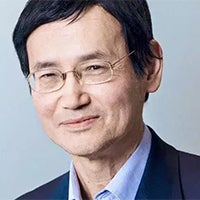On the tenth anniversary of 9/11, I attended a commemorative meeting at the British Academy in London. A professor of international relations recounted how he watched the horrific scenes of destruction of the World Trade Center in the company of his five year-old daughter. She posed this intriguing question: why didn’t this happen before?
Just a few years before she was born, in December 1994, Algerian terrorists attempted to fly a hijacked plane into the Eiffel Tower. Fortunately, French commandos terminated the hijacking when the plane stopped for refueling. This was a near-miss. The American writer of counterfactual fiction, Philip Roth, observed in his book The Plot Against America that: “the terror of the unforeseen is what the science of history hides.” The destruction of the Eiffel Tower is not an event in terrorism history—just one of numerous ambitious plots that were foiled.
With the current state of historical and scientific knowledge, there are very few unknown hazard events that should take catastrophe risk analysts by surprise. Almost all either did happen before in some guise, or, taking a counterfactual view, might well have happened before. Take for example the great Japanese tsunami and magnitude 9 earthquake of four years ago. It is doubtful that this was the strongest historical earthquake to have struck Japan. The Sanriku Earthquake of 869 may merit this status, based on archaeological evidence of widespread tsunami deposits.
Disasters are rare, and preparedness depends crucially on knowledge of the past. Aviation is the safest mode of travel; there are very few crashes. However there are numerous near-misses, where one or more of the key flight parameters is dangerously close to the disaster threshold. There is a valuable learning curve associated with the lessons gained from such operational experience.
The direct action of the co-pilot in the tragic crash of Germanwings Flight 9525 on March 24, 2015 raises again the question: why didn’t this happen before? As recently as November 29, 2013, it did. A Mozambique Airlines plane flying from the Mozambican capital Maputo to Luanda in Angola crashed, killing 27 passengers and its six crew. The pilot locked himself in the cockpit keeping out the co-pilot. He ignored alarm signals and manually changed altitude levels.
Quite apart from this and other historical precedents for fatal crashes caused by direct pilot action, there must be many more near-misses, where timely intervention has inhibited direct action by pilots suffering from some psychological disorder. The reporting of incidents is a crucial part of aviation safety culture, so is advancing the learning curve. Analysis of such data would contribute to accident risk assessment and subsequent risk mitigation measures.






